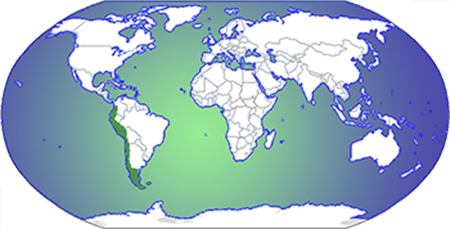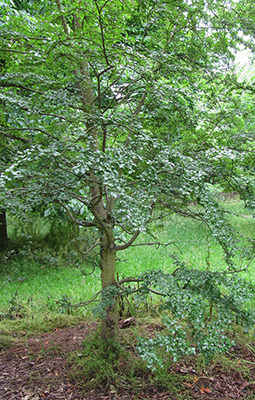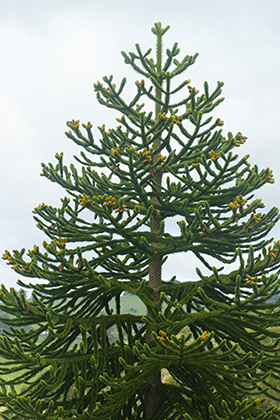mountains influence distribution
Overview
The continent joins Mesoamerica, the landbridge from Panama to Mexico, connecting the South American plant communities to the North American.
Our collection includes plants from cooler southern end of the continent and from the higher mountain areas of the Andes.
»Follow this link to view a map with the locations of the collection highlighted.

Mountain Influences

The Andes stretch down the western side of South America as the Rockies do through North America, both formed by continental plate movement. These mountain ranges reach up to 6,000m in altitude and cross from the polar through the temperate to the tropical zones.
Mountains influence plant distribution, acting as climate modifiers, physical barriers to plant distribution, and as refuges in times of climate change.
As the weather moves from west to east around the globe, mountains intercept the air and cause it to rise. If it is moisture laden, the lower temperatures experienced by the rising air cause the moisture to condense and fall as rain or snow, resulting in the western side of mountains being wetter than the eastern side. The level above which it is too cold for trees to grow is called the tree-line. Tree species found above that altitude are stunted; this is known as the Krumholtz effect.
At our Arboretum some trees are growing well outside the altitude and temperature ranges where they grow naturally. Examples include the myrtle beech relative nirre (Nothofagus antarctica) from the southern extremities, pehuen (Araucaria araucana) from the higher altitudes, Buddleja nitida from the northern end of the Andes and Buddleja incana from the southern. This indicates the capacity of plants to survive during the periods of warmer and colder climates of the past millennia.
Winteraceae
One of Tasmania's South American relatives
Captain John Winter was one of Sir Francis Drake's captains at the start of Drake's raiding, in the years 1577 and 1578, of the Spanish colonies in what are now Chile and Peru.
Winter discovered the healing properties of the tree bark while on this expedition from England, and it became known as "Winter's Bark". It was used in a tea to treat the effects of scurvy.
The specific name winterii is in commemoration of John Winter. Its local common name is canelo. The tree is in the family Winteraceae, again commemorative, along with the Tasmanian endemic, mountain pepper (Tasmannia lanceolata).
The Winteraceae also occur on the Atlantic Coast of Brazil and other places in the north of South America and in Central America, around the Tasman and Coral Seas and through Papua New Guinea to Borneo and the Philippines. Many other Southern hemisphere plant families have these wide global distributions, evidence of continental drift.
All Winteracae are dioecious, that is, they have male and female plants. The simple structure of the male and female parts of the flower is believed to show this family is ancient.
Domestic uses
Trees in our collection that provide edible seeds, commonly called nuts, that are popular in some parts of South America, are the pehuen or monkey puzzle tree (Araucaria araucana) and the Chilean hazel (Gevuina avellana).
The sap of the Chilean wine palm (Jubea chilensis) is fermented to make a potent alcoholic drink. To obtain the sap, the tree is cut down, which has led to the decline of the tree in the wild. Although this practice has now been banned, the tree is under threat of extinction in Chile. The time for trees to reach maturity is about 100 years.
The leaves of boldo (Peumus boldus) are used as a medicinal herb, and the seeds as a spice.
»Follow this link to view the full interpretive panel in PDF format.
